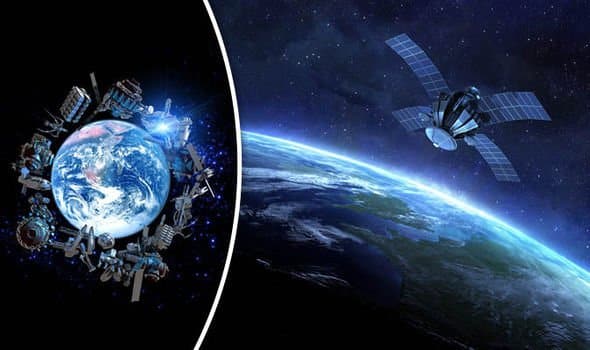Not only suborbital travel: SpaceX recently launched the first 60 satellites of a plane that will bring 12,000 into orbit: the Starlink network will extend internet coverage directly from space to another 3 billion people.
Astronomers express sincere concern that once completed in mid 2020 the network of 12.000 Starlink satellites will change the map of the sky as we know it, making several stars invisible from the ground and covering others with the brightness of the satellites.
SpaceX, the company led by Elon Musk, recently launched the first battery of satellites that are part of the Starlink network into orbit: it is an important phase of an ambitious project, that of bringing the internet across the globe, but it can change perceptions of the sky according to some scientists.
Just an hour after launching from Cape Canaveral in Florida the satellites (weighing around 220kg) have stabilized in low orbit, around 500km outside our atmosphere. The "train" of these 60 satellites has already demonstrated its brightness, causing hundreds of UFO reports and a spectacular video by an amateur astronomer in the Netherlands. There he is:
“I didn't expect them to be so bright,” explains Marco Langbroek, author of the film. “It's an incredible sight of a whole line of brilliant objects crossing the firmament.”
The difference with previous satellite launches is in the distance: 36.000km against 500km.
Of course, to collect the signals from Musk's satellites (which are not concentrated on the equator but distributed like a network) a dish will not be necessary, but the sky filled with other permanent lights (of which several will be visible from time to time even during the day) is not something to be happy about.
The astronomer Michael JI Brown of Monash University estimates that once in orbit there will be hundreds of satellites visible on the equator at all hours of the day and night: the stars visible to the naked eye may obscure in number and brightness.
Ronald Drimmel of the Turin Astrophysical Observatory goes further, defining the Starlink project as a "potential tragedy".
The potential tragedy of an artificial mega constellation like Starlink is that it distorts the map of visible stars. Starlink and any other similar projects will ruin the sky for the whole planet
Ronald Drimmel, Astrophysical Observatory of Turin
It is not just an aesthetic question
The astrophysicist Darren Baskill of the University of Sussex in the UK warns: “If we can see them with the naked eye it is likely that they will be quite annoying even for the next generation of large ground-based telescopes”. Like the Large Synoptic Survey Telescope in Chile. Every image of the sky would be "polluted" by thousands of fictitious stars." Even radio telescopes would have difficulty receiving signals.
The next set of launches will bring the number of Starlink satellites to 800, and will mark the beginning of the operational phase of the project, putting it ahead of the plans of other giants such as Amazon, which is making job offers for its “Project Kuiper” it will send another “constellation” of 3260 satellites into low orbit.
In his first statements, Musk makes it known that he does not ignore the problem, and that he and the Starlink team are evaluating solutions to make his satellites less reflective, perhaps by changing the height of their orbit.


